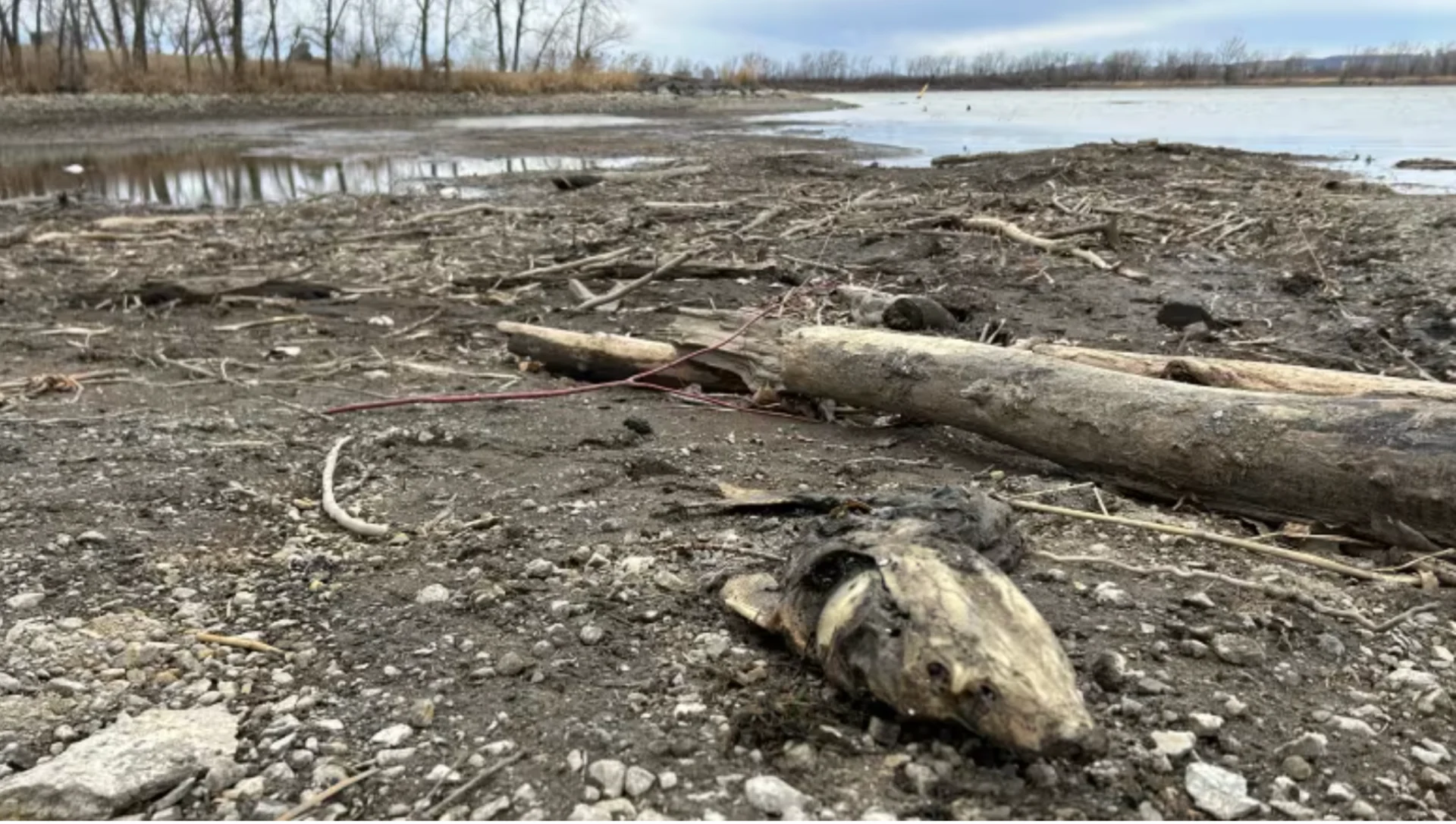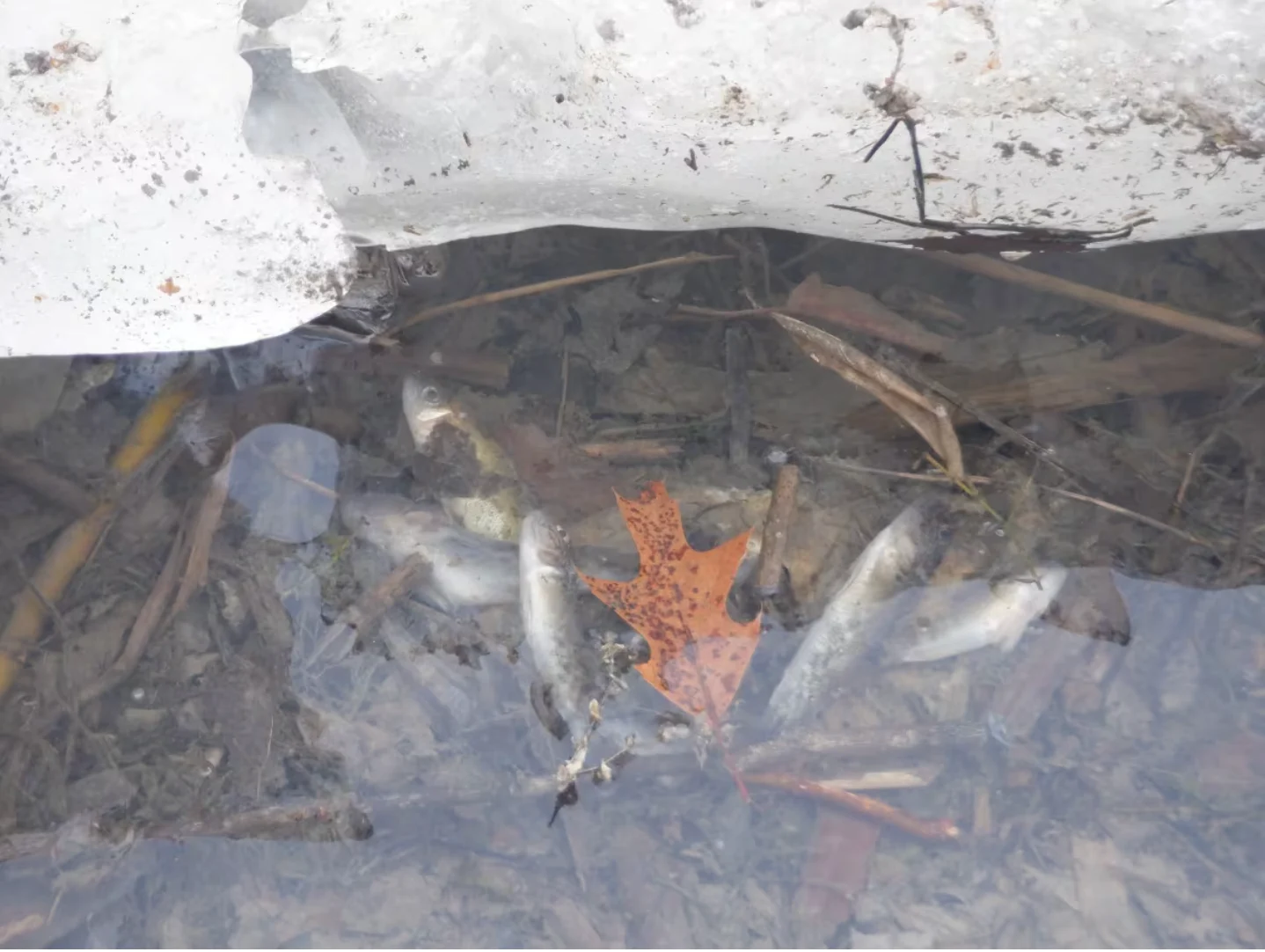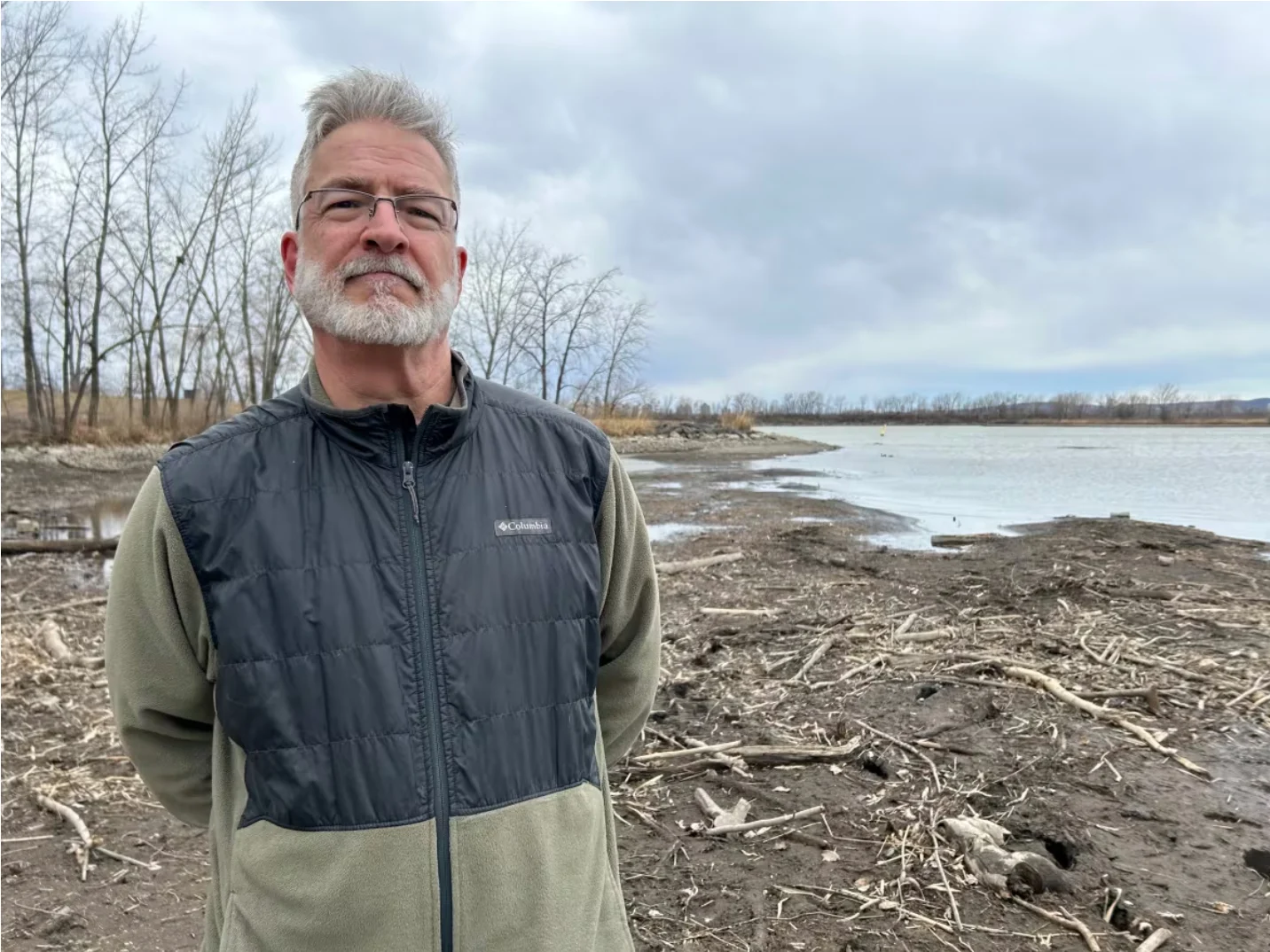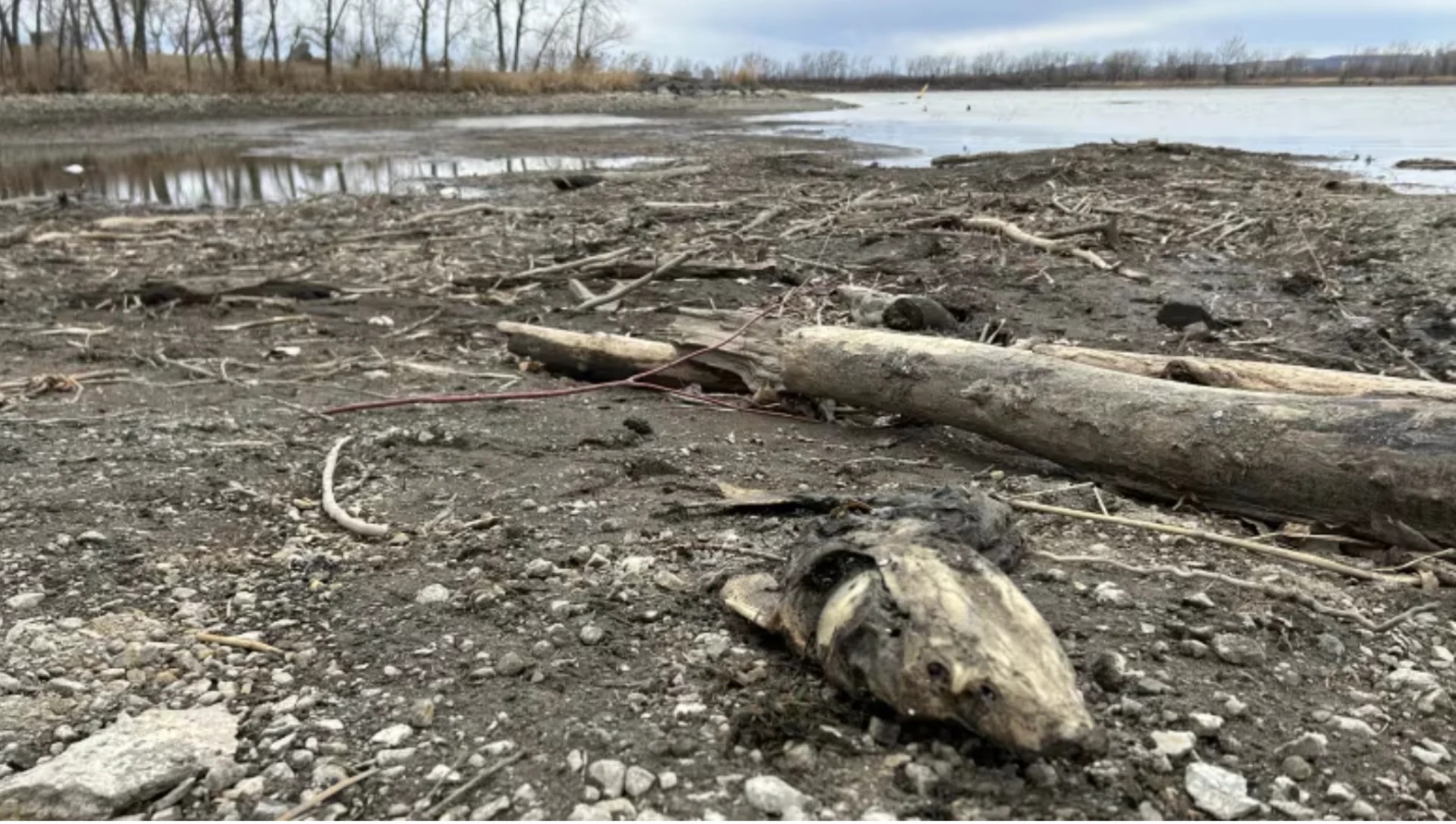
Troubling amount of dead fish found on Montreal's South Shore
When environmentalist Gina Philie set out to assess whether La Prairie Basin on Montreal's South Shore was due for a cleanup, she found herself tripping over more than just garbage.
Hundreds of dead fish and other creatures had washed up on the shore.
"It was very disgusting because you're literally just walking on different carcasses and you just have to go back to figure out what's going on," said Philie who is also a director with Vigile Verte, a local environmental group.
The organization was alerted about alarmingly low water levels at the end of February. Shortly after, it flagged the situation to Fisheries and Oceans Canada which is responsible for protecting aquatic ecosystems.
Every winter, the St. Lawrence Seaway Management Corporation lowers the water level in certain channels and canals to facilitate maintenance procedures ahead of the navigation season.

Philippe Blais explains that a lot of the animals affected by the low water levels are at the bottom of the aquatic food chain and therefore crucial to the overall health of their ecosystem. (Submitted by Gina Philie)
SEE ALSO: Banned flame retardants found in St. Lawrence River whales and fish
Biologist and founder of Vigile Verte, Philippe Blais, suspects the routine procedure might be behind the large number of dead fish which he calls a "minor disaster."
"Anything that isn't adapted to move too fast, everything that lives on the bottom, well they're not adapted to being without water especially in freezing temperatures," he explains.
In other cases, the water level might have dropped too low trapping animals in shallow puddles causing them to eventually die of asphyxiation.

Biologist and president of Vigile Verte says he's in discussion with federal oceans authorities to see if the water level can be lowered in such a way that doesn't interfere with the health of aquatic ecosystems in the La Prairie Basin. (Rowan Kennedy/CBC)
In a statement, the St. Lawrence Seaway Management Corporation points to the fact that it's been an exceptionally warm winter.
"Low to reduced ice cover, water evaporation from the basin related to warmer weather conditions combined with the other factor related to climate change would all have contributed to the observed situation," the corporation says.
Philie says she's used to seeing the water level drop around this time of year but she's noticing it to be at least 2 metres lower than usual. She says she wants government agencies to make sure it doesn't happen again.

Every winter, the St. Lawrence Seaway Management Corporation lowers the water level in certain channels and canals to facilitate maintenance procedures ahead of the navigation season. (Rowan Kennedy/CBC)
André Bélanger, the executive director of Fondation Rivières, says it filed a complaint with Fisheries and Oceans Canada and asked the St. Lawrence Seaway Management Corporation how it will make sure this situation doesn't happen again.
"There's no reason that in 2024 we cannot do maintenance work without destroying the environment," he said. "It doesn't make sense."
Water levels are expected to rise again later this month when the seaway opens to navigation on March 22.
In the meantime, Fisheries and Oceans Canada says it's in contact with St. Lawrence Seaway Management Corporation to obtain more information.
WATCH | Invasive 'vampire fish' make a comeback in Great Lakes:
This article, written by Cassandra Yanez-Leyton, was originally published for CBC News.









